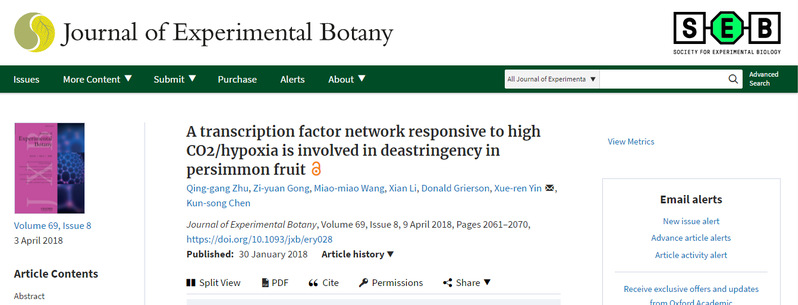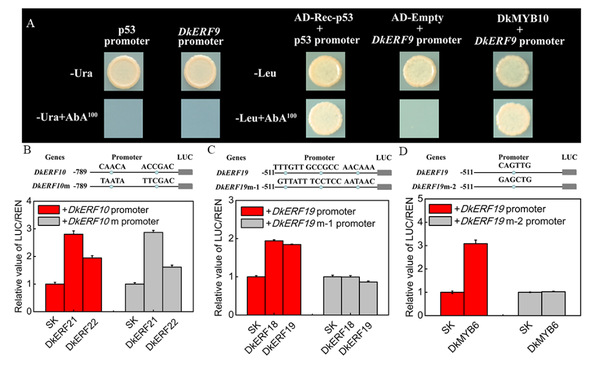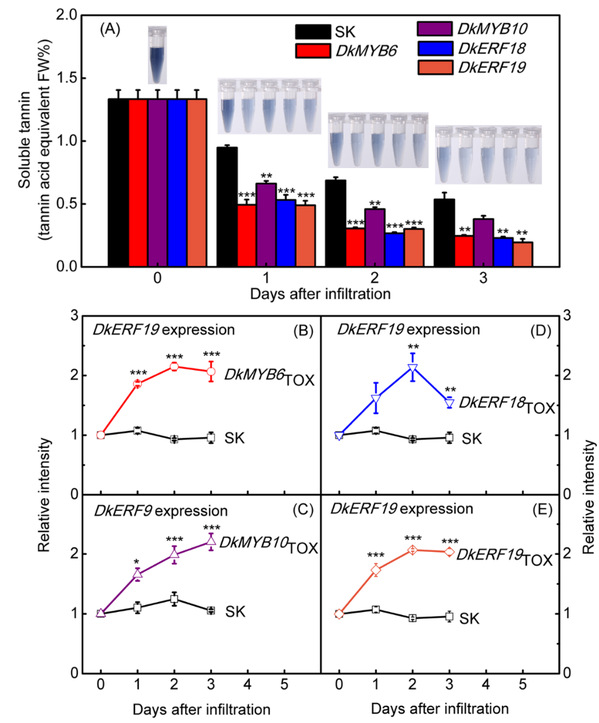Deastringency and softening is an important postharvest problem for persimmon fruit. Research found that a TF-TF regulatory cascade is involved in the persimmon fruit deastringency involving the hypoxia responsive MYB and ERF transcription factors. The article entitled “A transcription factor network responsive to high CO2/hypoxia is involved in deastringency in persimmon fruit” (DOI: 10.1093/jxb/ery028) recently published in Journal of Experimental Botany (5-year impact factor =6.044). Post-doctor Qinggang Zhu is the first author, Professor Xueren Yin is the corresponding author.
In previous study, four DkERF genes were involved in persimmon fruit postharvest deastringency. Based on the RNA-seq data, nine high CO2 responsive transcription factors were isolated. Further ananlysis by dual-luciferase, yeast one-hybrid and cis-element mutagenesis confirmed that DkMYB10 could physically bind and trans-activate the DkERF9 promoter, DkERF21 and DkERF22 could trans-activate the DkERF10 promoter by indirect way, and DkERF18, DkERF19 and DkMYB6 could physically bind and trans-activate the DkERF19 promoter. The potential roles of these TFs in fruit deastringency were analysed by investigating their transient over-expression (TOX) in persimmon fruit discs. Results showed that DkMYB6TOX, DkMYB10TOX, DkERF18TOX and DkERF19TOX were all effective in causing insolubilization of tannins, concomitantly with the up-regulations of the corresponding genes, and they work as a TF-TF regulatory cascade during the deastringency in the fruit. Such results may enrich the molecular mechanism of persimmon fruit deastringency.
This research was supported by the National Key Research and Development Program and the National Natural Science Foundation of China.



